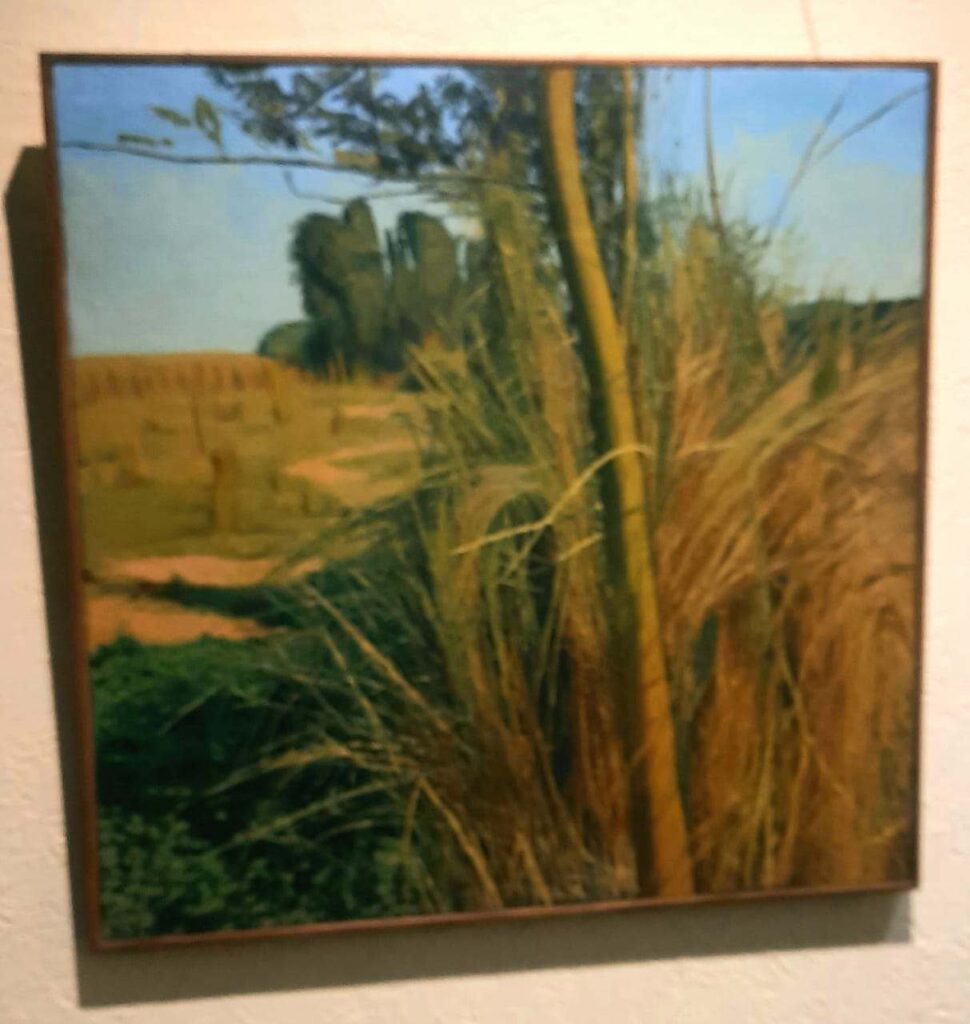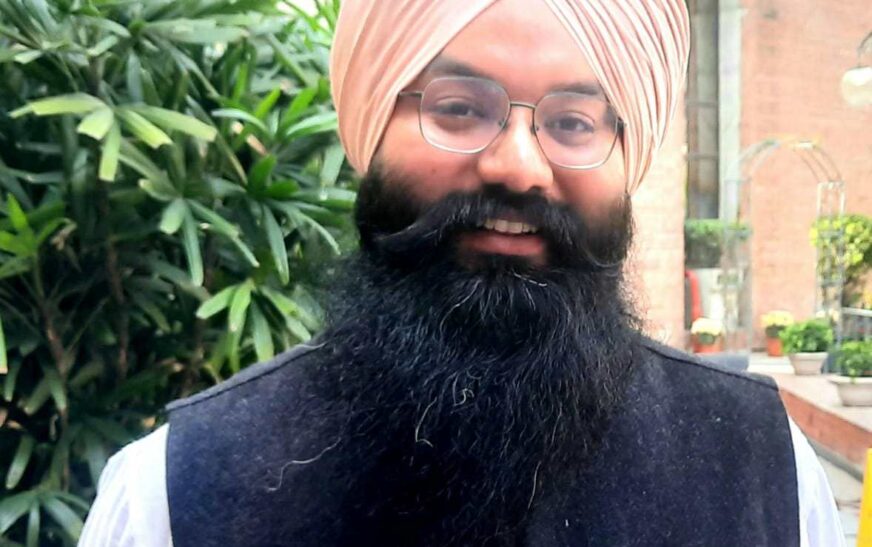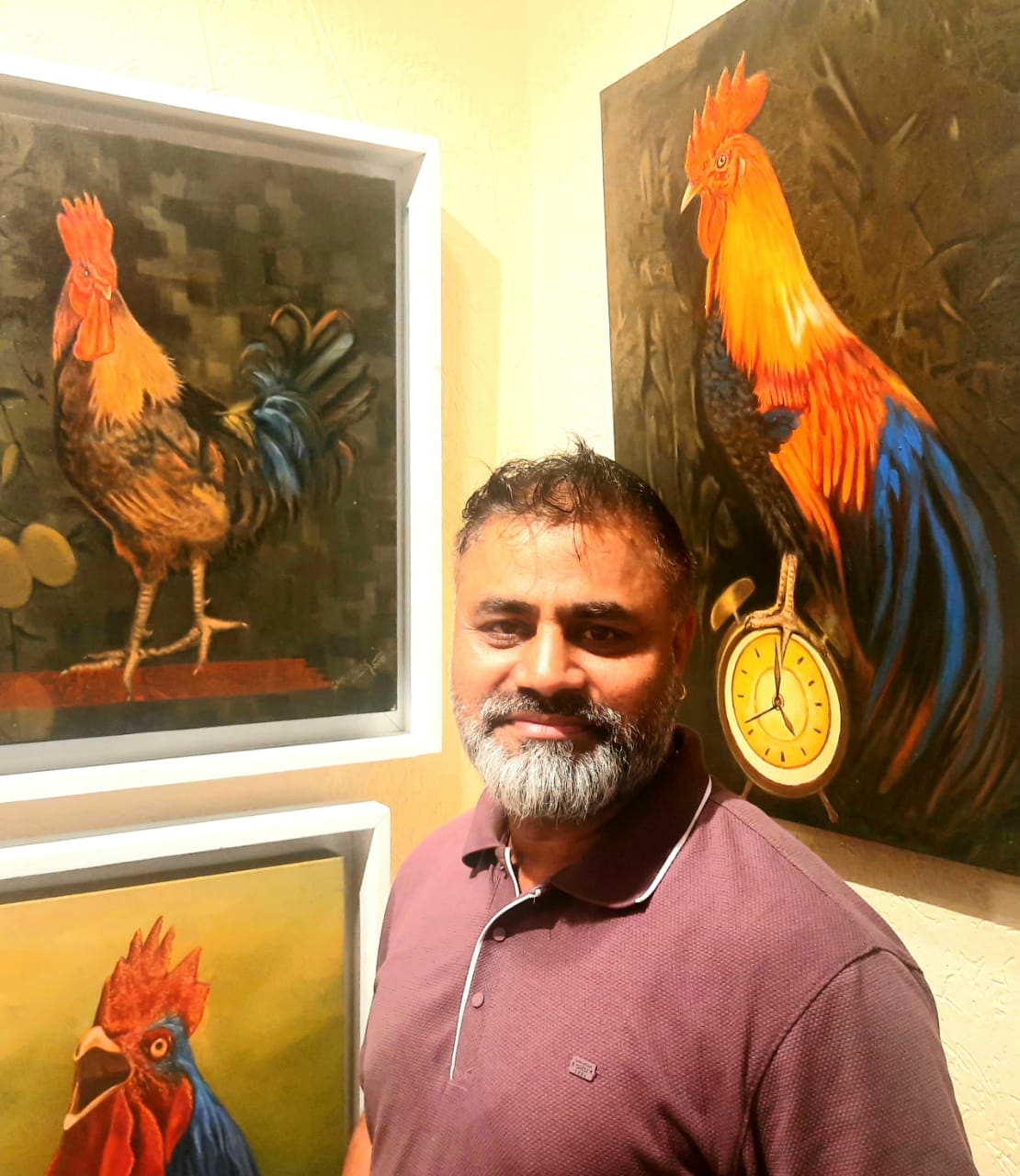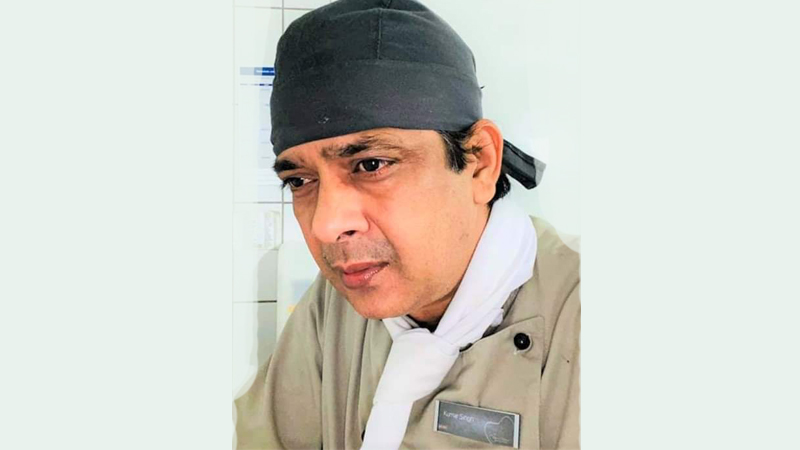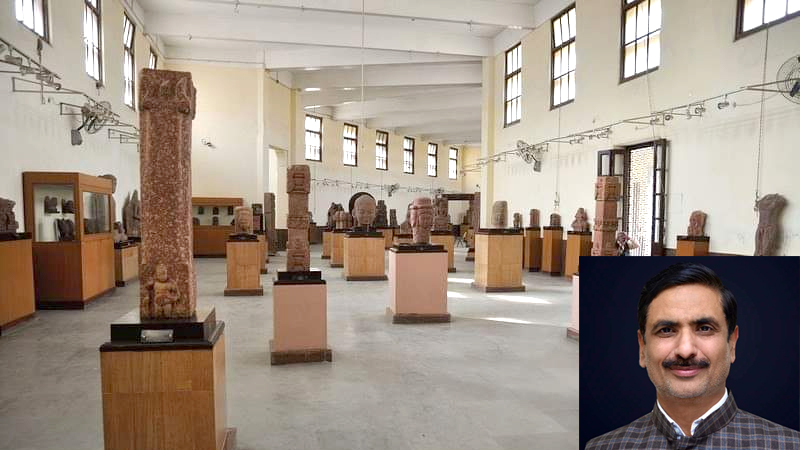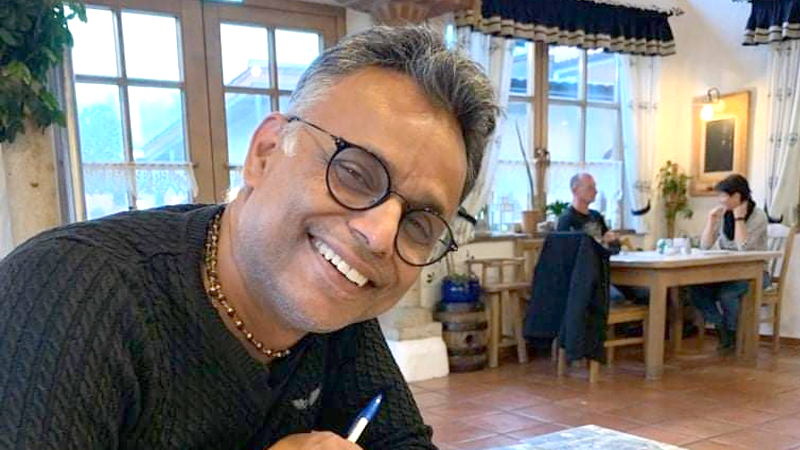Harmandeep Keerti stands as an exemplar of artistic versatility, with his oeuvre encompassing an impressive range—from expansive landscapes and evocative figurative pieces of nature to intricate fine-line drawings that exude meticulous precision. Although largely self-taught, he polished his craft through a brief but transformative painting program at Triveni Kala Sangam, New Delhi, and an intensive 40-day Plein Air Residency in Moscow.
This prolific period culminated in the creation of over 150 artworks, many of which graced his inaugural solo exhibition, Celebrating Yellow, held at the Stainless Gallery in New Delhi in 2019. His latest exhibition, Begumpura, represents an evolution of his plein air practice, capturing ineffable essence of nature through a sophisticated interplay of mediums such as gouache, oil pastels, and oil paints.
The title Begumpura derives its inspiration from the illustrious hymn Begumpur Seher Ki by Guru Ravidas, which extols the vision of an idyllic city—a utopia unmarred by fear, sorrow, or the inequities of social stratification. Harmandeep imbues this utopian ideal with his own romantic vision of a pristine natural world, seamlessly translating it onto canvas.
The series emerges from Harmandeep’s profound engagement with two geographies that have profoundly shaped his artistic sensibilities: the verdant environs of his birthplace, Saharanpur, and the tranquil vistas of Dharamshala’s mountainous terrain. Since 2017, he has revisited these locales with an almost meditative regularity, meticulously chronicling their evolving landscapes. His work transcends mere visual documentation, presenting a dialectic between organic rhythms of nature and the insidious encroachments of human activity, such as the diminishing wilderness and vegetation. He also captures inherent dynamism of nature, portraying phenomena like the metamorphosis of nascent wheat stalks into golden, ripened harvests.
The Begumpura series, however, is far from a literal transcription of nature. It serves as an eloquent articulation of the artist’s interiority, seamlessly melding his subjective perception with the external milieu. Harmandeep’s style, rooted in the lexicon of contemporary open impressionism, employs exuberant brushstrokes that conjure an ephemeral interplay of light and movement. His compositions are imbued with a theatrical dynamism, where intersecting visual planes and geometric abstractions create depth and ambiguity. The interplay of light and shadow, combined with his audacious use of color, lends his work a visceral immediacy.
His palette is a symphony of hues: golden yellows suffuse sunlit grasses, burnt reds shimmer against verdant foliage, and deep blues evoke the infinite expanse of the sky. One canvas portrays a stately grove of slender, pale ochre trees juxtaposed against a backdrop of rich greens, while another depicts a colossal arboreal mass rendered in dark, brooding blues, seemingly ascending to the heavens. These landscapes, replete with emotive gravitas and compositional audacity, evoke a profound sense of wonder and reverence.
In an exclusive dialogue with The Interview World, Harmandeep Keerti expounds on his artistic ethos, elaborating on his distinctive focus on nature and the techniques that animate his creations. He shares insights into his exhibitions on both national and international platforms, elucidates his choice of materials and mediums, and delineates the burgeoning opportunities within the art market. Furthermore, he imparts sagacious counsel to aspiring artists, urging them to pursue their creative aspirations with diligence and conviction. Here are the distilled highlights of our enlightening conversation.
Q: Could you elaborate on the type of paintings you create and the inspiration behind your focus on nature?
A: Nature entwins our existence inextricably; it envelops us, nourishes us, and defines the very essence of our being. We rise with its rhythms and seek solace beneath its tranquil canopy. Nature is not merely the air we inhale but the lifeblood that sustains us. It is this profound interconnectedness that fuels my artistic vision—a relentless pursuit of capturing the sublime beauty and grandeur of the natural world.
My artistic perspective is deeply rooted in my origins. Growing up in Saharanpur, a city resplendent with trees that have stood sentinel for over a century, I was immersed in an environment teeming with natural splendor. These towering arboreal giants, flanking the roads with quiet majesty, and the skies adorned with ephemeral, shapeshifting clouds, became my earliest sources of inspiration. In my formative years, I sought to immortalize the transient allure of those clouds through my art.
Of late, however, my fascination has evolved. It is the interplay of light and foliage that now captivates me—the ethereal way sunlight caresses leaves, casting intricate mosaics of shadow and radiance. This luminous symphony of nature forms the cornerstone of my current creative endeavors.
For the past 12 years, I have devoted myself unreservedly to the pursuit of art. It is not a peripheral occupation but the central axis around which my life revolves, a reflection of my enduring communion with the natural world. My art is not merely a vocation but an impassioned homage to the ineffable splendor of the nature that has shaped my soul.
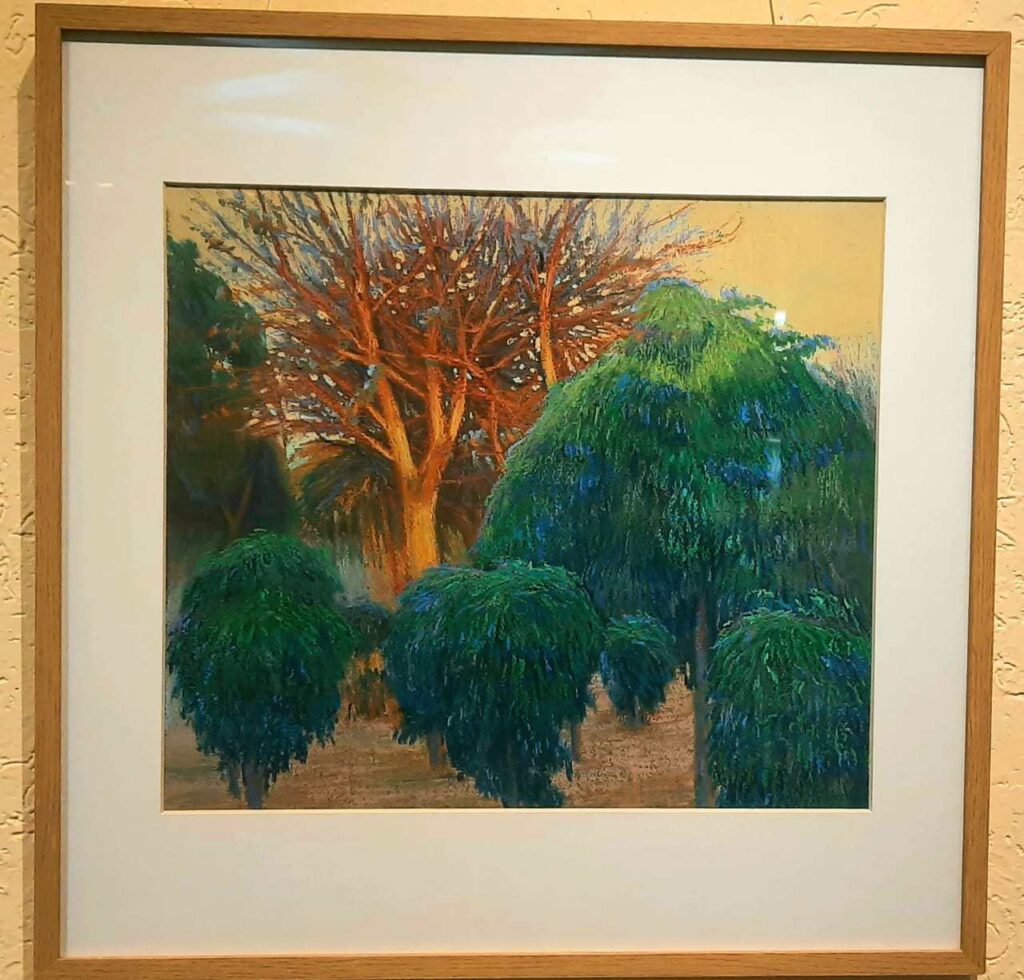
Q: Could you tell us about the national and international platforms where you have exhibited your artwork?
A: My artistic oeuvre has been showcased on both national and international platforms of notable repute. In the United States, my work has been presented in California. I have also showcased my art in Japan. The esteemed Nidhi Art Gallery has played a cardinal role in showcasing my artwork. However, the heart of my artistic presence lies in Russia, particularly in the cultural capitals of Moscow and St. Petersburg, where a significant portion of my work resides.
One of my pieces has even found its way into the hallowed halls of the City Museum of Alexandrov, a testament to its artistic value. Moreover, several monasteries in India have extended invitations to me, requesting that I adorn their sacred spaces with my creations. To date, I have entrusted four of my works to these institutions, where they now serve as integral elements of their spiritual heritage. Thus, my art has woven an intricate tapestry across continents, leaving an indelible mark wherever it has been displayed.
Q: What materials and mediums do you use in your paintings, and how do they contribute to your artistic expression?
A: While I am not, strictly speaking, a mixed media artist, a glance at the background reveals the presence of oil pastels. When I refer to them as oil pastels, I do so with precision—nothing more, nothing less. In addition to oil pastels, I employ gouache, oils, and soft pastels, all of which constitute the primary tools of my craft.
I also indulge extensively in the use of ink, often with a dip pen, evoking the rich traditions of an earlier era. This connection to history is not merely stylistic; it is personal. I have a profound admiration for vintage stationery, which I avidly collect during my travels. These, then, are the mediums that shape and define my artistic expression.
Q: What market opportunities do you envision within this segment for your work?
A: I am, at my core, a self-taught artist, armed with a bachelor’s degree in economics, which has endowed me with a sharp acumen for numbers. From this vantage point, I find it almost inconceivable to regard the so-called art market in India as a genuine marketplace. With a paltry valuation of Rs. 1500 crore, it scarcely qualifies as more than a small village economy. Indeed, the notion of an “art market” in India, as it stands, is a mere illusion—one that exists only for those who possess the right connections. Meanwhile, global giants such as Saudis and Christie’s dominate, seizing a staggering 80% of the market share.
In this context, creating a meaningful space for artists in India is an undertaking of monumental proportions. The concept of an “art market” is, in essence, a Western construct—rooted in a framework that is entirely foreign to the Indian reality. To engage in discourse about art markets requires us to acknowledge the economic parameters at play.
But if we turn our gaze to the Indian landscape, the so-called “art market” here is nothing more than a hollow charade. Rs. 200 to 300 crore is scarcely sufficient to warrant the term “market”—a sum that pales in comparison to the revenue generated by bustling locales like Chandni Chowk, which can easily accrue Rs. 100 crore in a single day. By this metric, the Indian art market fails utterly, unable to produce even a fraction of that sum over the course of an entire year.
Thus, the term “art market” is, in this instance, a gross misnomer. Nevertheless, despite these grim realities, I continue to sell my works handsomely through Instagram and other social media platforms—crafting my own niche in the absence of a formalized art market.
Q: What message would you like to share with younger generations who are passionate about art and aspire to build a career in this field?
A: At the outset, much like many of my own inspirations, it is paramount to have heroes—those individuals who ignite the flame of creativity within you. When I refer to “heroes,” I mean those who compel you to explore the vast repository of human knowledge. I implore anyone residing in Delhi to visit the Lalit Kala Academy, where the library boasts an impressive collection of over 200,000 books. It is a veritable goldmine for anyone seeking to expand their intellectual horizons. One must immerse themselves in this wealth of literature, read voraciously, and, in due course, identify their own paragons of inspiration. These are not merely figures to be admired, but sources of profound influence.
Once you have discovered these mentors, begin by replicating their vision—drawing what they have seen and conveyed. Then, from this foundation, allow your imagination to soar unrestrained. However, I urge you not to simply follow the prevailing trends; chart your own course.
In my own journey, I began by anchoring myself in a specific discipline, for it is only through a deep understanding of the fundamentals that one can venture into abstraction or, as I term it, the so-called “art world.” I use the term “so-called” deliberately, for the world of art is in a state of constant flux. Without a firm grounding, like a tree with roots that stretch deep into the earth, no matter how lofty its branches, the artist is susceptible to being uprooted by the first strong breeze.
To the younger generation, I offer but one piece of counsel: persist in your practice and continue creating. Do not be in haste to seek grandiose achievements. Start small—let your first paintings be modest in size. Such an approach will establish the necessary foundation for your future growth, equipping you with the resilience and skill needed to flourish in the years to come.
